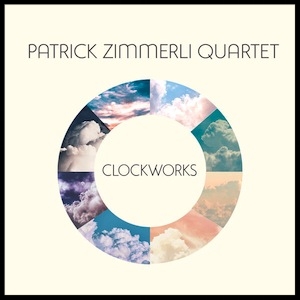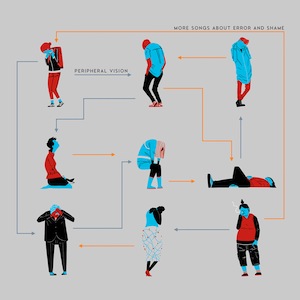Label: Intakt Records, 2018
Personnel – Aruan Ortiz: piano; Brad Jones: bass; Chad Taylor: drums.
On November 26th, 2016, Cuban-born pianist Aruan Ortiz showed up at unerhort!-festival in Zurich, Switzerland, for a versatile trio performance that included a mash-up of two originals, a curious interpretation of Bach's classical piece, Ornette Coleman’s music, and a jazz standard. That work is now available through Live in Zurich, a record put out by the Zurich-based label Intakt Records, which had previously released Hidden Voices (2016), with Eric Revis and Gerald Cleaver on bass and drums, respectively, and Cubanism (2017), in which he digs his Cuban roots through solo piano.
For this concert, the pianist swapped in bassist Brad Jones and drummer Chad Taylor, initiating his trance-like pulsations with a 37-minute medley that comprises “Analytical Symmetry” and “Fractal Sketches”, two coiling originals from Hidden Voices. Having toured for two weeks in Europe, the members of this trio enjoy a special hookup, wielding communication and alertness as key ingredients for their adventurous journey. This first part comes unhurriedly into being, mixing the Afro sounds of Taylor’s mbira and the muted percussive pianism of Ortiz. Whimsical bass plucks are added later, and the bassist opts for the bow before spectacular movements imbued with Cuban tradition, contemporary jazz, and modern classical take place. The passages are sometimes thoughtful and temperate, becoming tension-filled with unmistakable traces of Muhal Richard Abrams (Ortiz dedicated the record to the late free jazz pianist) from the middle point on, bursting up with creative freedom, melodic entanglement, and dazzling rhythms.
Delivering a few more thrills, the three-movement Part 2 lasts less than 18 minutes and includes a three-minute bass improvisation that is simultaneously knotty and spontaneous; an urban reimagining of Chopin’s “Etude #6 Op 10”, here subjected to a modern groovy treatment; and a collage of two compositions by Ornette Coleman: “Open or Close/The Sphinx”, an exercise in rhythmic endurance and density with a remarkable two-hand pianistic control.
The album comes to a close with “Alone Together”, tackled with an impassive caravan-like pace and tweaking harmony, and blossoming as a balladic contemplation while eschewing any swinging surge.
At the piano, and in excellent company, Ortiz skillfully blends poetic gravitas with a fearless, intense sense of rhythm.
Grade B+
Favorite Tracks:
01 – Part 1 ► 02 – Part 2








































